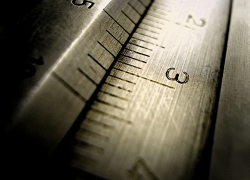Why accuracy is essential in the data center
Why accuracy is essential in the data center

Accurate monitoring of power consumption within the data center has always been important for the sake of balancing electrical loads. Overburdening power distribution units (PDUs) or draining supply feeds can result in fried circuitry or electrical shorts that cause unscheduled downtime. Equally important, data centers face substantial operational expenses in the form of energy consumption. In 2014, these facilities consumed an estimated total of 70 billion kilowatt-hours of electricity in the U.S. alone – an amount that is only expected to increase over time.
In order to keep electrical loads balanced while cutting back on energy consumption wherever possible, facility operators have leveraged local and remote power monitoring tools. For the most part, these solutions have yielded tangible return on investment.
However, in recent years, colocation data centers, in particular, have sought to enhance billing accuracy by invoicing according to a client's total electricity consumption. Thus, the allowable margin for error for power monitoring has narrowed substantially. Now more than ever, precision is a top priority in the data center.
Too many solutions are off the mark
"5% isn't good enough."
Power monitoring is no longer just an IT issue; it's also a business issue. If colocation managers are unable to track the total amount of energy in use by each client, it's impossible for them to accurately bill these tenants. Even if the facility's environmental conditions and power infrastructure are optimized, the business could be losing money or increasing the risk of client churn by not charging the correct amount.
And yet, according to Data Center Knowledge contributor Jon Trout, the majority of data center power meters tout a 5 percent margin for error.
"The best practice in power monitoring is to attain utility-grade accuracy, which is within 1 percent of the actual amount of power consumed," Trout wrote. "A utility grade level of accuracy enables co-located and other data centers to fairly rebill clients for the cost of energy."

Chasing zero
We've certainly come a long way from the days of "sneaker reports," which entailed actually walking to each electrical meter and taking a live recording of consumption levels. With automatic power monitoring, facility operators can perpetually track energy consumption for a more accurate reading.
But to reiterate Trout's message, the goal is to whittle down the margin for error to as close to zero as possible. Of course, power monitoring perfection is a pie in the sky, and one that even utilities continue to aim for. That said, the top power monitoring solutions will be within the 1 percent range. In other words, power metering will be 99 percent accurate at all times. Five percent simply isn't good enough anymore.
Don't risk losing money as a result of inaccurate power monitoring. Anything less than 99-percent billing grade accuracy is inadequate. Contact Geist today to learn more.



